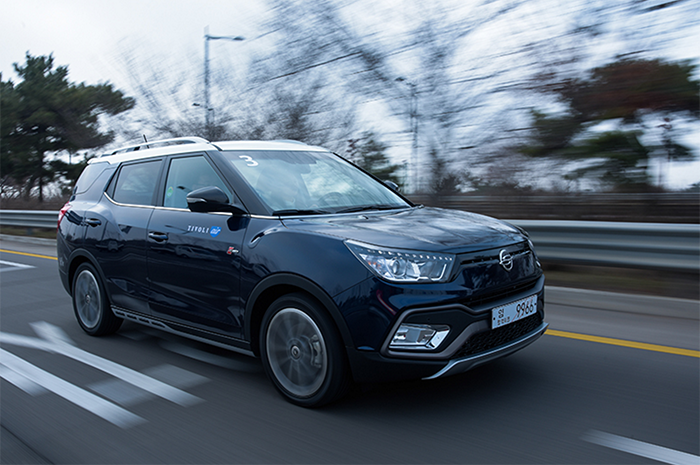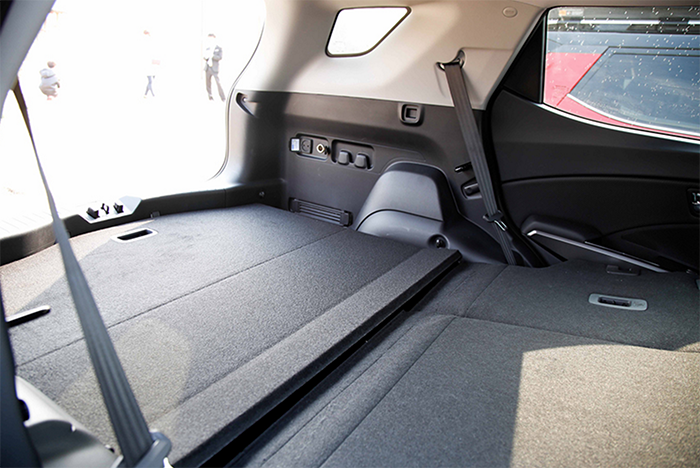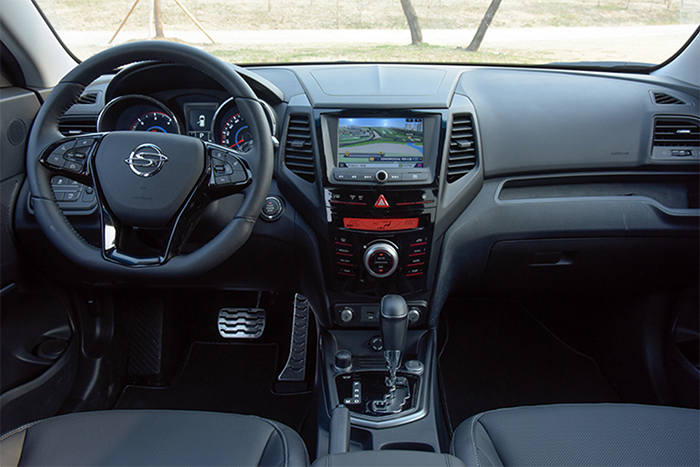
The Korean auto maker, the SsangYong Motor, is setting new records for its sales figures. Its sales records including exports have been rising every month and it achieved a surplus last quarter. This year, the year-to-date sales volume is already 47,000 cars. This figure far exceeds their sales records for the same period last year by 3.7% for its global records and by 8.6% for its domestic records in Korea.
The company seems to have gotten through the long, depressing tunnel of the crisis, where the company was first sold to SAIC Motor and subsequently sold again to the Mahindra Group due to the foreign exchange crisis, coupled with a sit-down labor strike, the subsequent government’s engagement, and its laid-off workers’ strike, etc.
The recovery of SsangYong started from the first series of Korando, introduced after the company’s merger to the Mahindra Group. Korando C, released as a follow-up model of Action 2011, led into the increased line-up of Korando Sport and Korando Turismo, which in turn played a decisive role into making the company’s masterpiece, Tivoli, while the SUV demand was rising.

Since it was first released at the dawn of the New Year of 2015, Tivoli’s sales records have not slowed down. 63,000 were sold in the first year of its release. It is over 5,000 cars per month on average. What is notable is that this heated demand still has not cooled down. There are no parallel and precedents in the Korea auto industry to this tenacious continuation of the new release effect for Tivoli.
SsanYong chose Tivoli Air as the next model to continue its revived prime time of its company. It is the model with the extended length from the Tivoli base, which satisfied customers’ thirst for more space. Their wheelbases are the same at 2,600mm, but the rear side of Tivoli Air has been extended to expand the trunk space. Its extended length is 245mm, so the total becomes 4,440mm.
Tivoli’s length is 4,195mm. With the extended length of 245mm, the capacity for the trunk has expanded and the back seat has become more convenient. The trunk space has increased from 423 liters to 720 liters, and there is more space for the back seat angle adjustment. The trunk capability is the largest in its class.
The position of the seat stays the same, so there is no change of room for passengers’ knees. However, it is more convenient with the back seats that can be lowered by up to 32.5 degrees. Nevertheless, it should be recommended that the back seat be pulled a little back. Still, its trunk capability remains competitive and large, and it affects the space for the front row seats, helping increase the satisfaction rating.

Even with the extended length of the car, its appearance is not too different from Tivoli. There are only changes in the graphics of the rear lights and in the character lines of the tail gate with every appearance composition including the volume of the shoulder line remaining the same. The difference is that the emblem symbolizing Tivoli Air is attached to the tail gate.
The composition of its engine, transmission, and suspension is identical as well. The maximum torque of the 1.6l diesel engine system is 30.6 kg.m at 1,500rpm and the maximum output is 115-horsepower engine at 4,000rpm. Although the starting point of the maximum torque is at the lower RPM, the small torque band dropping at 2,500rpm is a weakness. It is the reason why the car starts strongly but its performance is less consistent.
The sensation of acceleration from mid to high speed appears to be missing for Tivoli as well. As there are no essential changes, its characteristics remain the same. The automatic 6 transmission by Aisin lessons the lack of satisfaction on the acceleration aspect. Its ability to connect to the power source and distribute it is swift and smooth.
The ride experience is quite solid. It is because the bottom of the car is made to be sturdy despite the multi-link on the rear wheel suspension. It is far from the expected soft ride experience from the body of monocoque. But, more people regard this feature as an attraction. It means that there are surprisingly many people who are drawn to this masculine qualities of the car and choose Ssangyong’s vehicles.

There are merits to these body features. Riding and handling are well defined. With the speed control and good control of break points, it maintains its balance while running on curvy roads. Compared to the premium SUVs which luxurious features, the Air shakes a lot and it is a small SUV.
The Tivoli Air is economically made for an affordable price. The satisfaction level is relatively high considering the price. These merits have led to good market responses. Last month, 2,342 Tivoli Airs have been sold. This is an increase of 1,000 cars from the previous month. Thanks to this, the sales of the entire Tivoli series has increased from 4,797 in March to 5,375 in April.
This is more than Trax of Chevrolet, QM3 of Renault Samsung Motors, Tucson of Hyundai, or Sportage of Kia. Ssangyong Motors had agonized over a release day of the Tivoli Air. They searched for the best day, minimizing the interference with Tivoli and considering the demand trend of small-sized SUVs.
The results are successful. The time was picked when there was no interference and consumes have lost their appetite for other competitive models. Thus, the strong momentum of the Tivoli brands in the B-segment SUV market is expected to continue in the future.

